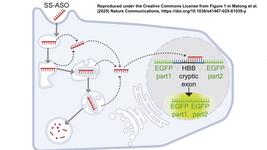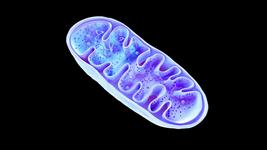CMN Weekly (22 July 2022) - Your Weekly CRISPR Medicine News
By: Gorm Palmgren - Jul. 22, 2022
Top picks
- Danish researchers have shown that Cas12a nucleases can broadly utilise structurally engineered crRNAs with breaks or gaps in the otherwise highly-conserved loop region. The researchers tested 16 modifications ranging from engineered breaks (STAR-crRNAs) to large gaps (Gap-crRNAs), as well as nucleotide substitutions, and they all enabled gene-cutting in at least some of five Cas12a nucleases. The observed nuclease-specific differences in the crRNA tolerance may improve classification criteria and engineering strategies.
- To treat autosomal dominant hearing loss, Chinese researchers have used cell sorting to precisely detect the efficiency of in vivo CRISPR-Cas9 gene editing in hair cells. Until now, it has been almost impossible to evaluate editing efficiencies because the whole cochlear tissue contains many non-target cells. In a mouse model, the authors show that a mutation in Kcnq4 responsible for hearing loss was repaired in 34% of hair cells, while the editing efficiency in the whole cochlear tissue was only 1.5%. Furthermore, gene editing improved hearing in treated animals as evaluated by several parameters.
Research
- Researchers in the Netherlands demonstrate how DNA oligonucleotides can effectively inhibit Cas9 activity both ex vivo and in vitro, thereby increasing the safety of genome editing applications. The researchers show in human cells that DNA oligonucleotides can reduce both on- and off-target cleavage. Moreover, in vivo experiments find two critical factors for robust inhibition: the length of the complementary region and the presence of a protospacer adjacent motif-loop on the inhibitor.
- A systematic comparison of the most widely adopted dCas-based gene activation systems shows considerable variation in their efficacies depending on the actual circumstances. The American scientists behind the study found that the platforms display variable relative expression levels in different human cell types. In addition, their transactivation efficacies vary based upon the effector domain, effector recruitment architecture, targeted locus and cell type.
Industry
- Verve Therapeutics has announced the pricing of its upsized underwritten public offering of 8,333,334 shares of its common stock at a public offering price of $27.00 per share, for total gross proceeds of approximately $225.0 million. In addition, Verve has granted the underwriters a 30-day option to purchase up to 1,250,000 shares of its common stock at the public offering price.
- Wugen has been granted FDA Fast Track Designation and Rare Pediatric Disease Designation (RPDD) for the company’s off-the-shelf CAR-T cell therapy, WU-CART-007. WU-CART-007 is deploying CRISPR/Cas9 gene editing technology for the treatment of relapsed or refractory (R/R) T-cell acute lymphoblastic leukaemia (T-ALL)/lymphoblastic lymphoma (LBL). It is currently being evaluated for safety and efficacy in a global, open-label, first-in-human, Phase 1/2 study (NCT04984356).
- Vertex Pharmaceuticals and Verve Therapeutics have established a collaboration to discover and develop an in vivo gene editing program for liver disease. Under the terms of the agreement, Verve will receive an upfront payment of $60 million to advance the discovery, research and certain preclinical development of an undisclosed target. At the same time, Vertex will fund the programme and be responsible for subsequent development, manufacturing and commercialisation of any program stemming from Verve's research efforts.
Detection
- Chinese researchers propose a new Cas13a cascade cyclic signal enhancement strategy without amplification for detecting RNA viruses and disease-related RNAs. The method utilises intra-enzyme chain replacement-promoted Cas13a cascade cyclic reaction and is performed in 30 minutes with fluorometric readout. A detection limit of 75 aM was achieved with miRNA-21 as the target. Moreover, analyses of clinical respiratory syncytial virus (RSV) samples demonstrate good performance.
- Another Chinese research team describes a CRISPR Cas12a-based detection system for miRNA-141. Cas12a is used to initiate a switchable ternary electrochemiluminescence (ECL) biosensor combined with a Co3O4@Au nanoemitter. In addition, a programmable enzyme-free hybrid chain reaction (HCR) amplifier on a paper working electrode (PWE) is used to assemble the nucleic acid tandem and accomplish the secondary recursion of the signal. As a result, the biosensor demonstrates high sensitivity and specificity, with a detection limit of 3.3 FM.
- Researchers in India describe a CRISPR-Cas9-based lateral flow test for detecting SARS-CoV-2 RNA. It uses Cas9 from Francisella novicida and can detect specific nucleobase and nucleotide sequences. Detection depends upon the stoichiometric-based binding of FnCas9 ribonucleoprotein complex (RNP)-target sequences. The assay has been optimised to be conducted within one h and shows 100% sensitivity and 97% specificity in clinical samples across a range of viral loads.
Reviews
- A German research review looks at DNA base editing in nuclear and organellar genomes. The paper gives a comprehensive overview of the base-editing technology, details strategies to improve the efficiency of deaminase-based base editors, and how they can be engineered for altered activity windows or improved specificity and precision.
- Researchers in the USA discuss the recent advances in CRISPR-based biosensors for point-of-care pathogen detection. The review gives a detailed background to different CRISPR-Cas effectors and their working principles for disease diagnosis. Moreover, it focuses on developing new signalling mechanisms, eliminating preamplification and sample pretreatment steps, and miniaturising CRISPR reactions on digital assay chips and lateral flow devices.
- Chinese researchers discuss the potential of the CRISPR-Cas system as a tool for diagnosing and treating infectious diseases. The paper describes the biological principles, application fields and prospects of CRISPR-Cas in the molecular diagnosis and treatment of contagious diseases and compares it with existing molecular diagnosis methods.
- Engineering off-the-shelf universal CAR T cells is the subject of a review by researchers from India. The paper details the background and challenges of CAR T therapy and discusses strategies for improvement. All 28 ongoing clinical trials with allogeneic CAR T therapies are listed, and their challenges are discussed.
- Researchers in Bangladesh present a review of CRISPR-based techniques that can specifically detect pathogens causing fatal tropical diseases. The paper discusses the use and current status of malaria, zika, chikungunya, HIV-AIDS, tuberculosis and rabies.
News from CRISPR Medicine News
- We brought a disease roundup of genomic medicine candidates for sickle cell disease on Wednesday. Seven gene-editing approaches are already on the clinical stage to cure the disease, which affects millions of people worldwide and is the most common inherited blood disorder in the United States.
To get more of the CRISPR Medicine News delivered to your inbox, sign up to the free weekly CMN Newsletter here.
Tags
CLINICAL TRIALS
IND Enabling
Phase I
Phase II
Phase III
Recurrent or Progressive High-grade Glioma, (NCT06737146)
Sponsors:
Suzhou Maximum Bio-tech Co., Ltd.
Sponsors:
Suzhou Maximum Bio-tech Co., Ltd.
IND Enabling
Phase I
Phase II
Phase III
Advanced Peritoneal Malignancies or Abdominal Metastatic Solid Tumors, (NCT06912152)
Sponsors:
Zhejiang University
Sponsors:
Zhejiang University
IND Enabling
Phase I
Phase II
Phase III







